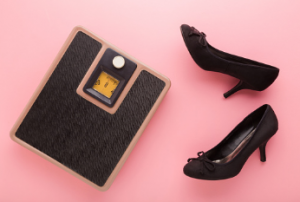There are several reasons to wear womens high heels. These reasons range from increased height to pain in the lower back. While they are a great way to add height to your outfit, they pose health risks. Continue reading for more information. To wear high heels safely, wear a good pair that fits your feet. Besides the health benefits, wearing high heels can make you look and feel more attractive.
 Health risks of wearing high heels
Health risks of wearing high heels
A recent review of literature on high heel injuries found that the number of injuries increased by 82% over a decade, which may reflect a trend. Women wearing high heels reported pain in their arms, hands, and shoulders. Moreover, nearly half of these injuries occurred in the home, while a third occurred in public settings. While there’s still room for improvement, the current body of evidence provides solid epidemiological support for an increased risk of MSK injuries from wearing high heels.
Chronic injuries to the ankles caused by high heels are particularly concerning because they increase the risk of falls. One such condition is Haglund’s deformity, which is a bony enlargement of the heel. In addition, women who wear high heels may also develop bunions, a bony growth at the base of the big toe. Bunions can cause a lot of pain and swelling and, in severe cases, may require surgery.
Another common condition caused by high heels is heel pain. In addition, people who wear heels regularly have an increased risk of developing deep vein thrombosis, a severe condition in which blood clots develop in the leg’s deep veins. Moreover, women should avoid wearing high heels all the time, especially if they are unable to walk for more than two hours a day. Alternatively, they should consider wearing more supportive shoes.
High heels alter the way people walk, which weakens and shortens the muscles in the ankles and calves. The increased pressure on the knees may lead to knee, ankle, and back pain. In addition, high heels can also affect the flow of blood in the legs, resulting in varicose veins. Before buying a new pair, women should always consider the health risks of wearing high heels.
The attractiveness of wearing high heels
Wearing high heels increases a woman’s perceived attractiveness. High heels also make a woman look more feminine and attractive, a study suggests, and additionally, it may increase a woman’s confidence and self-esteem. High heels are a simple and inexpensive way to boost your appearance and appeal to men. The benefits are many. Here are some of them. This study was conducted with shocking results of 448 participants, including men and women.
Two basic studies have explored the relationship between wearing womens high heels and physical attractiveness. Study 1 used photographs of women wearing different footwear, clothing, and cosmetics. While the study did show a positive association between high heels and attractiveness, several limitations exist. First, the study relied on photographs and not actual measurements of women. It did not address the problem of directionality and the third variable.
High heels are also known to increase a woman’s appeal. In addition to improving a woman’s external appearance, wearing high heels can also boost a woman’s self-esteem and improve her overall self-esteem. Women wearing high heels can even become more attractive and powerful than women who don’t wear high heels. In addition, this study found that women who wear high heels have higher sexual appeal than women who wear flats.
Increased height
A recent study conducted at Sahmyook University, Korea, tested whether women’s high heels improve posture. It found that wearing heels made people’s bodies adjust to the height of the shoe, which increased their centre of gravity and caused back pain. In addition, some women reported back pain after wearing heels at higher heights. The research also found that the women were more likely to complain of severe back pain when wearing the highest heel.